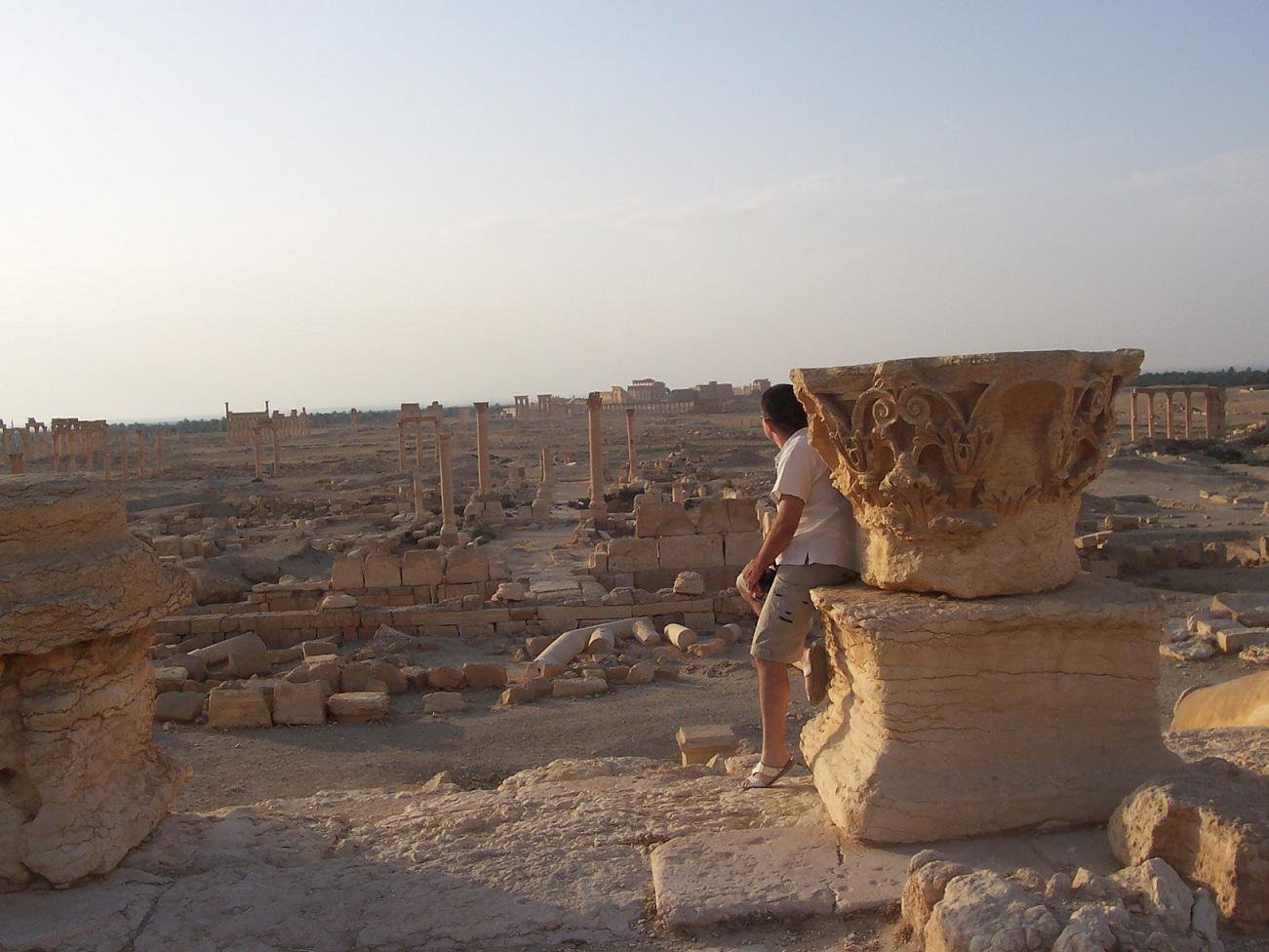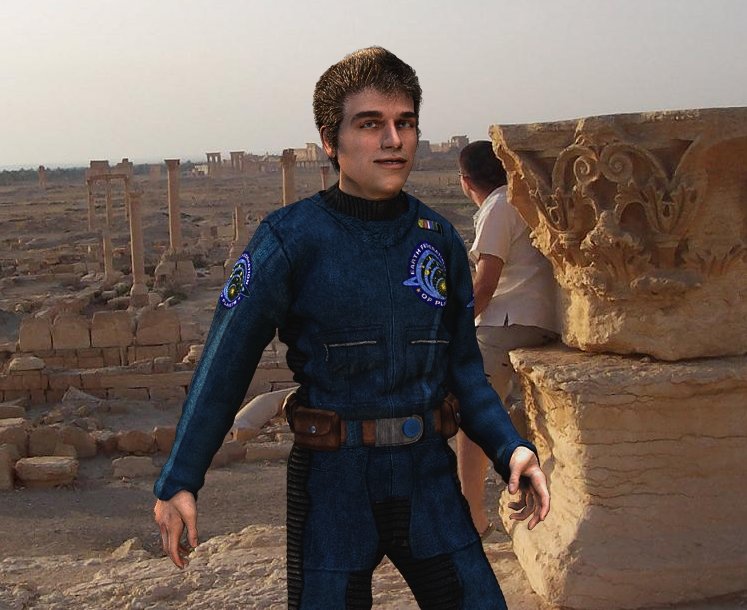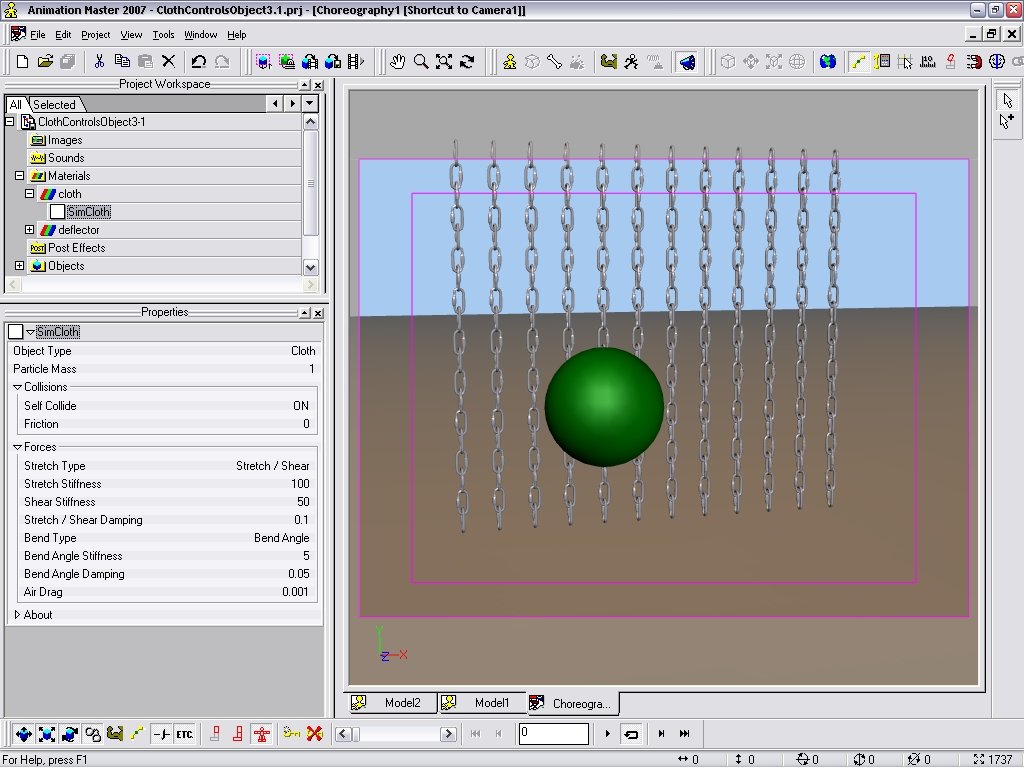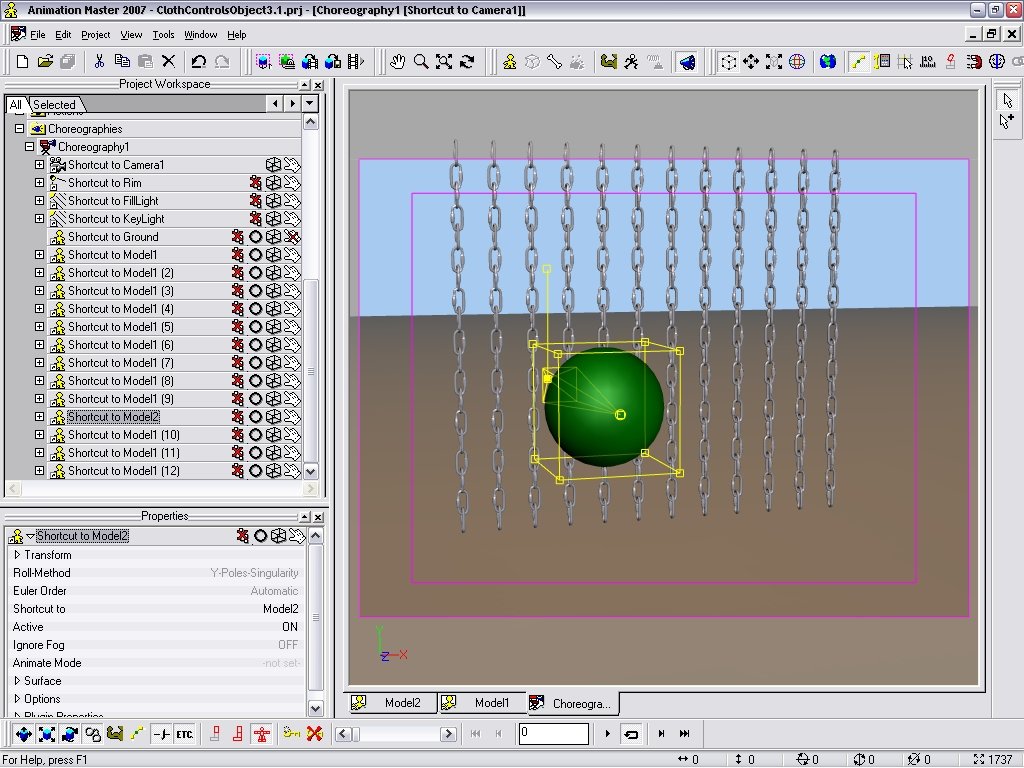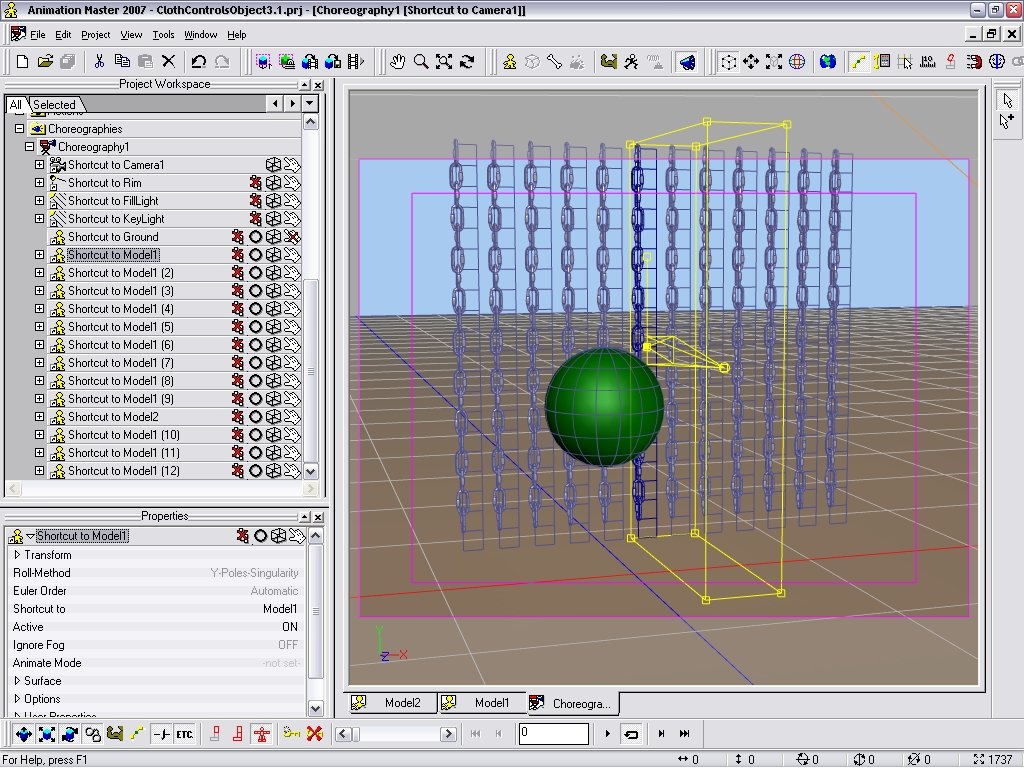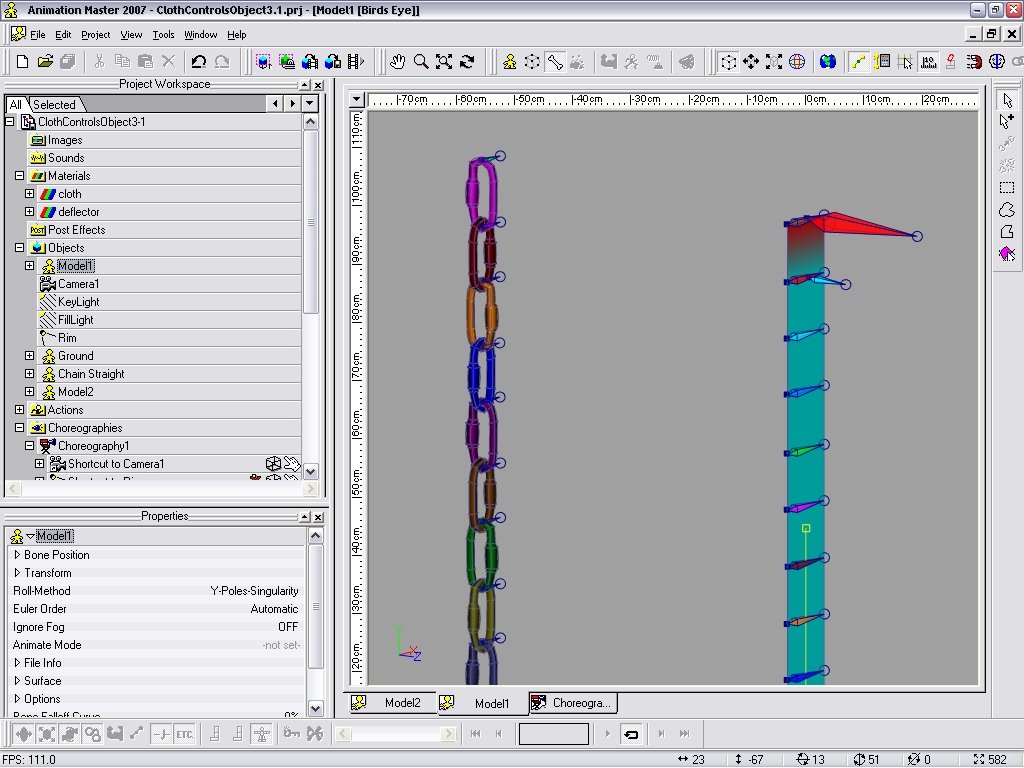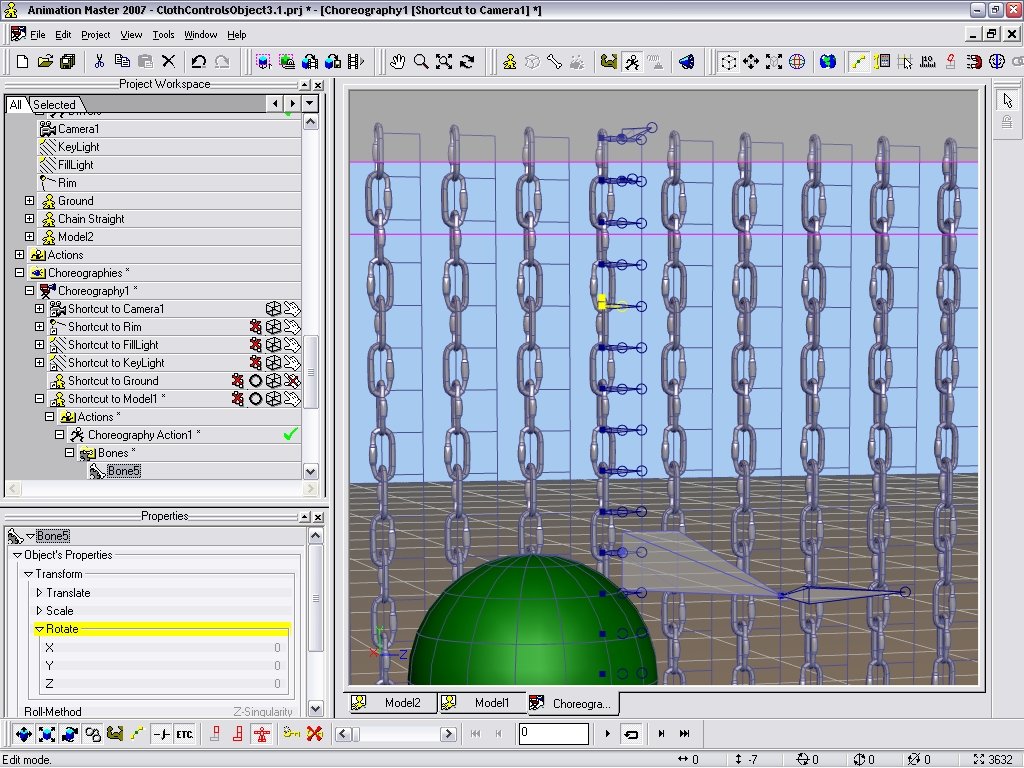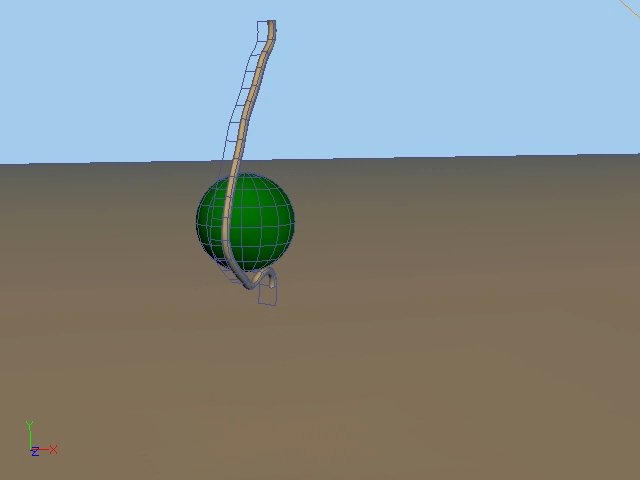-
Posts
895 -
Joined
-
Last visited
Content Type
Profiles
Forums
Events
Everything posted by entity
-
Beautiful work! I can't wait for the tut!
-
Hello, We've (John "Hubukai" Hubickey and I) are still working on sets for our characters. The thought entered my mind that these characters should be good for any set we make for them, so I've been playing around with the old roto feature a little in A:M. I found that I don't really need to do it that way, since A:M puts out really nice alpha channels in the TGAs that can be used to copy your character from a blank scene and paste onto a photo directly, via Photoshop. The Idea was to use the rotoscope feature in A:M (right-click on the "shortcut to camera" in the PWS under the Choreography) to light and adjust the camera angle to fit the photo. Then take into photoshop and copy/ paste it in... and also do some lite editing to make the blend more seamless. Anyway, it's better than a blank background. Below: the original plate photo grabbed from the web, and the final result after A:M and Photoshop.
-
As opposed to a haphazard grid of splines, just placed there to connect the parts of the face or body together. The loops/ continuos splines follow the contours of the surface shapes/volumes.
-
I read a lot about Edge loops: They control the topology of the surface, and they follow the pattern of muscles and bone structure under the skin. It also helps you see your character's volumes better. Doing this with splines gives you less to try to smartskin to correct the shape of moving geometry. Something interesting about controlling splines to make a hard edge: The closer two loops are, the harder the ridge or edge you can create. Thanks for bringing this up, it's been a while since I modeled something.
-
Jake, Very good comeback! Your animation skill is great... I like the fact that you improvised and added some character to the walkcycle. So now your going to use this walk on Lady Goodbody? I have to see this. P.S.- Are you going for a comedic effect here? P.S.S.- I like the way you set-up the character to show the walk from many angles (+the walk/path in background) all in the same view. Maybe we should all start showcasing our new models and animations with this in mind. It makes it easier to see what we did all at once... I am going to start doing that my self. Thankyou for the idea.
-
I like that... It gives me some ideas.
-
It can be fixed in the hip if you do not wish to change the leg's angle. But you must move the knee forward a little if you wish for a slight knee bend. Can the foot tilt more without deforming too much? If so that may help reposition the leg. Keep plugging away and don't give up... there is a solution, at worst you might have to go back to the previous keyframe and stick a new keyframe in just to stop it before it happens.
-
Impressive muscles. It's neat and clean, too.
-
I'm in AWE!!! Exellent work! Are your reflections blended, they seem to be dulling the nice punch the red metal is giving in the other renders. It is one hell of a great rendition of a character.
-
Could you post your render settings... have you tried rendering with no extra settings... rendering with only shadows and no multipass or motion blur? Try turning everything off and see if the render still acumulates time. If it does then it is a setting outside camera settings... look into the chor settings next and change those. Keep taking the settings away until you have found what part of your chor is causing this... if nothing changes then it must be your model. Hope you find a solution!
-
Had a great time guys. Thanks, John, for hosting... Don thanks for getting me there and home (there was so much going on, I forgot to make a font for my handwritting- I promise not to discuss politics along with vintage sci-fi.)... Vern, if you chose to work for the "devil" does that make you a "demon"? Good luck on your new venture... Mack, I'm blown away by how your rigging has come along. I learned much! Do you get any sleep? ... I think I'm really becoming a Sith Lord. Darth Entity!
-
So it's just the cloth's collision radius keeping the chains from one model from colliding with the chain geom of the neighboring model? That's more what my question was about. The rest I get. ... Sorry, I tend to babble.
-
No. The chain's bones are constrained (translate to) to the bones that are constrained (path) to the cloths splines. Okay... the large bone at the top is the bone that holds the strip up, and the top spline cps is grouped to. The rest of the cps are grouped to the small bone which is the cloth's bone. I constrained to each row spline a bone and each bone will point/ align itself in the positive direction of the spline, the base of the bone is at the start of the spline (0% ease). If you wanted you could "offset" it's position from the origin of 0% ease by translating it after the constraint is applied in the action or pose or chor... wherever you are animating it, and it would follow the paths curve and direction still, it would be off the path though... that is good for compensating for thickness. I suggest using ease to position the bone on the spline if you want it to sit in the middle or between cps. The small bone you see highlighted in the screen capture is the chain link bone. I did that so you could see that the bone is "attached" to the cloth spline bone. It is also interesting to note that you only have to build one set of chains but can instance it multiple times and still have the cloth simulate with the other cloth in the scene. So when you have many cloth objects in a scene, it will react to all the cloth you have in the scene if it comes in contact with it. The cloth does the work and the chain is just following the cloth via the constrained bones constrained to the cloth's splines. The chains have no cloth on them... they are not in the simulation at all. Only the cloth strips and the ball are in simulation. The chains do rotate and bounce and stretch... that is the only real problem with it, but it's quick and relatively easy to set up.... you could do the chains better with Newton dynamics. I just want to show that you could change the geometry of the object without having to re-simulate again. I will try something way more complex soon, so you can see what I really want to do with this. Thanks for the replies!
-
-
Only slowing down the deflector's movement worked to make it not flip so high... also what helps is changing the settings to 1/4 of the default settings in the cloth, but having the ball hit lower in the chain also works. DUDE... it's true physics at work here... if the character impacts it fast, that energy has to be causing a reaction like that! Accept the results of a fast moving object hitting a chain or rope... the only other way I can think of is to change gravity making it higher to keep the chains from being able to go so high... think "real" physics.
-
This topic is also posted here: http://www.hash.com/forums/index.php?s=&am...st&p=243770 Basicly, this technique is a way to have cloth deform a bulky object, just like it does with a button except using a bunch of bones instead of one. Since cloth is made up of a flat mesh, you can add objects to the surface via path constraint to the cloth's splines, to allow the objects to stay with the cloth... well! This is done with constraints/bones, so why couldn't you do it also with bones in an object like a rope or a backpack (Woot). :: You can create a cloth grid and set up as you would normal cloth on a character. Don't forget to make a deflector object for the cloth to react to. :: Create some bones at each of the cp's of the cloth. Now you have a grid of bones (don't parent them... keep them all seperate). :: Create a pose (ON/OFF) and start constraining those bones to the splines (path constraint). You will have to use "ease" to get the bones into the exact position on the spline, because the bones will attach to the spline at "0% ease" which is the begining of the spline. If you want to use 0% ease you must enter "0" into the "ease" field to create a keyframe in the pose, otherwise A:M will animate the ease automaticly in the chor from 0 to 100% over the span of time in the chor. :: Now, you need to keep these bones handels pointing to the bone above in the grid, so use "aim roll at" to do that. Now, you got all these bones attached to the cloth when you turn on the pose in an action... wait... theres more! :: You can create or import that belt or chain or backpack and rig it like your cloth grid (these bones need to be controlling the bulk object... only use the amount of bones you really need to make it work: the bones nearest the cloth will be the main bones. You can make other bones that are parented with these bones to control other parts of the object you made or imported.) This object will not be a deflector... it is not cloth either so it doesn't need a simcloth material on it. :: Make a new pose (ON/OFF). This pose will constrain your object bones to the closest cloth bones using "translate to" and "orient like". MAKE SURE CORRESPONDING BONES ARE ORIENTED AND IN THE SAME POSITION! That is a basic rigging rule... even if your not "orienting like", it's always a good idea to do it so your rig looks clean (it doesn't have to be perfect, just neat). ... Now you have all these object bones in the exact position and orientation of the cloth bones. :: Hide (H) your object and simulate your cloth. This is just a test... doesn't need to be perfect or long lasting! :: Un-hide your object and make sure your two poses are ON. Make the cloth transparent 100%, so it doesn't show, unless you want it to show. Scrub through... Look at it! There is an object distorting and bouncing around your character, something that can't be done as well with dynamic bones. If your object is sinking into your character... try setting your collision radius larger to keep the object from penetrating your character too much. Hope you can understand this... I have a sample animation and project (There are some animations of the strap and chain examples here below, and two of the objects projects (Rope and Chain projects).) I tried a rope object and a strap object and a chain object (the chain was created by Mike Muncy and is available on the A:M extras DVD) FakeRopeDynamics_finalvback.mov ClothControlsObject1.zip FakeStrapDynamics_finalvback.mov FakeChainDynamics_finalVback.mov ClothControlsObject2.zip
-
Hold down the shift key when choosing the spline, according to this thread: Creating a path, can it be done in a model? Here above is explained how to select a spline in chor.
-
Me and Steve Sappington were trying to get the path constraint to work in an ON/OFF pose a couple weeks ago but I couldn't get it to work. I tried turning the constraint ON AFTER the simulation in the chor and also BEFORE the simulation, but I could never get the pose to actually constrain the bone to the spline unless I defined the constraint in the chor. How did you get the Path Constraint Pose to work in a chor? Well it's a good habit to close the chor and action windows that are using the pose as well... that could be it. But I was using v14.0 when I did this... never tried it in the betas or v13. Did you download the project I uploaded? I didn't have any trouble... ... a work around would be to do this in an action and copy the keyframes to the pose.
-
Okay guys... a quick test... Say you want to add someobject that has the properties of cloth, but is made up of variable shapes and parts... like say you want to make a chain or rope that can act like cloth. What do you do? Well since cloth is made up of a flat mesh, you can add objects to the surface via path constraint to the cloth's splines, to allow the abjects to stay with the cloth... well! This is done with constraints/bones, so why couldn't you do it also with bones in an object like a rope or a backpack (Woot). :: You can create a cloth grid and set up as you would normal cloth on a character, then create some bones at each of the cp's of the cloth. Now you have a grid of bones (don't parent them... keep them all seperate). Create a pose (ON/OFF) and start constraining those bones to the splines (path constraint). You will have to use "ease" to get the bones into the exact position on the spline, because the bones will attach to the spline at "0% ease" which is the begining of the spline. Now, you need to keep these bones handels pointing to the bone above in the grid, so use "aim roll at" to do that. Now, you got all these bones attached to the cloth when you turn on the pose in an action... wait... theres more! Next: you can create that belt or chain or backpack and rig it like your cloth grid (these bones need to be controlling the bulk object... only use the amount of bones you really need to make it work: the bones nearest the cloth will be the main bones.). Next, make a new pose (ON/OFF). This pose will constrain your object bones to the closest cloth bones using "translate to" and "orient like". MAKE SURE CORRESPONDING BONES ARE ORIENTED AND IN THE SAME POSITION! That is a basic rigging rule... even if your not orienting like it's always a good idea to do it so your rig looks clean (it doesn't have to be perfect, just neat). ... Now you have all these object bones in the exact position and orientation of the cloth bones. Now hide (H)your object and simulate your cloth. This is just a test... doesn't need to be perfect or long lasting! Now, unhide your object and make sure your two poses are ON. Make the cloth transparent 100%, so it doesn't show, unless you want it to show. Look at it. There is an object distorting and bouncing around your character, something that can't be done as well with dynamic bones. If your object is sinking into your character... try setting your collision radius larger to keep the object from penetrating your character too much. Hope you can understand this... I have a sample animation and project (2.62mb-prj^v14.0...and mov files zipped) I did of a simple test, but the object could almost be anything that dangles... hehehe (get your mind out of the gutter!)... well you will see. I'm going off to play with this idea a little more... it might even be good for making characters rigs react to a gun blast. Hmmmmmm. I'll be back later! ::basicly, this technique is a way to have cloth deform a bulky object, just like it does with a button except using a bunch of bones instead of one. Cloth_Path_control_mesh.zip
-
Don...okay...will contakt you on Friday 10th. MSN IM in the morning as usual or anytime over my three days off that I might see you in MSN Mess. Vern: I think we saw your Lost World project last time, but I wanna see it again. Are the books in there yet? I don't remember the handcuffs... I always want to see your new and old work... sometimes everything goes by pretty quick and a second look is always woth it.
-
ok...ok... I wanted to do the meeting on my 3 day weekend (10th/11th/12th), but I am going to have to do it on the one day off I'll have that weekend(18th)... I'll be coming there, but I won't be worth much. But it's better than not having Vern there... so I'll try not to fall asleep. John, do you have bus/train route info for getting there? If not it's okay, I'll find out sometime soon how I'm going to get my "pedestrian" butt over there.
-
I'm scared...
-
NO VERN???????????????????? OH NO!!!!!!!!!!!!! Is it possible for you to clone yourself by then, Vern. If you can model a dna kit, then you can build it... and then .... oh that was just silly of me. Maybe we could just split you in two... with your permission of course? Well, Have fun at your reunion. You will be missed.
-
John, If these girls don't have any "hardware" or "software" attached to them I don't think you will have to worry about me... just kidding. As for the smoke... well I'll just say I'm sorry right now.
-
I've been waiting for this! Thanks! I'm coming for sure!










